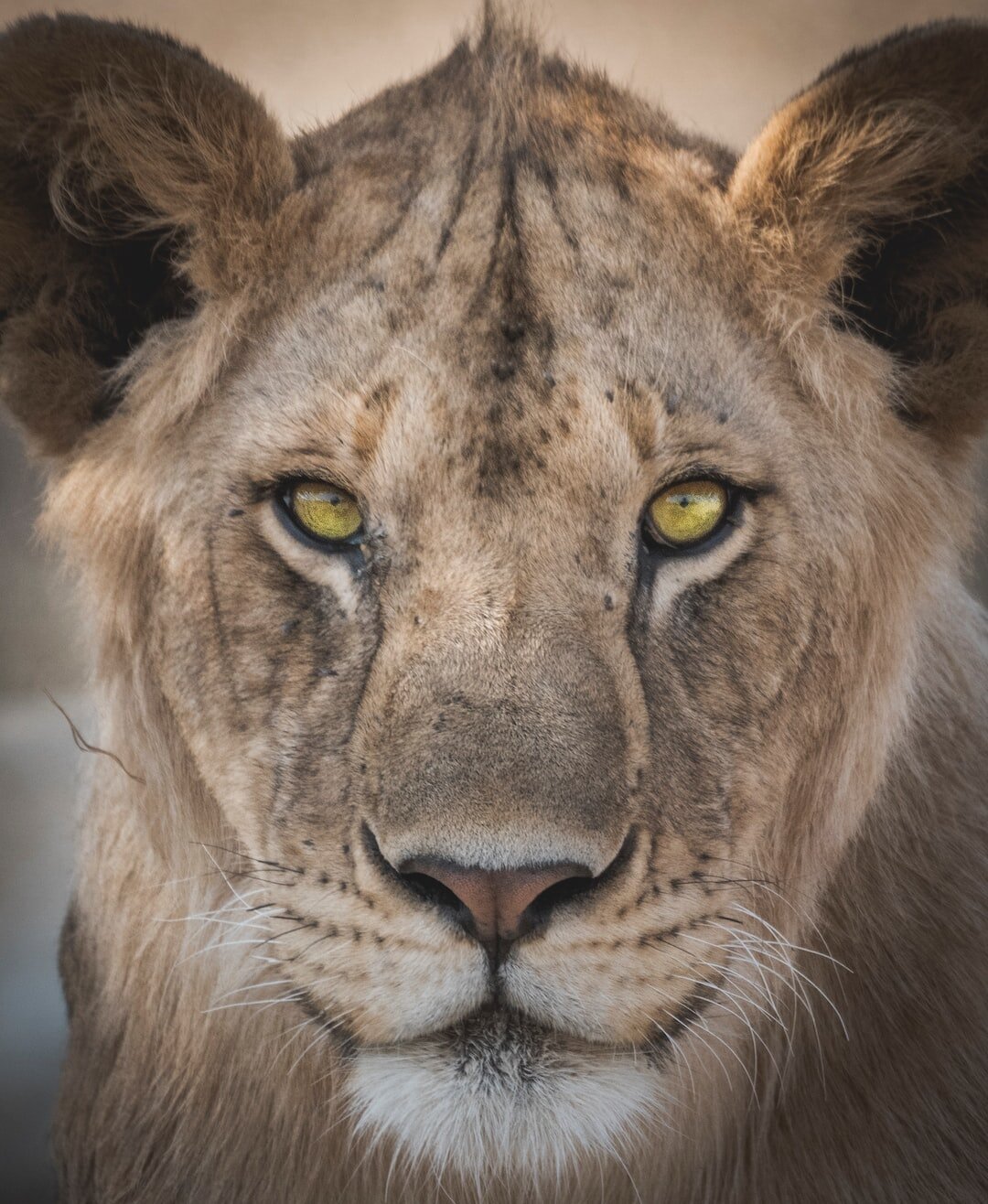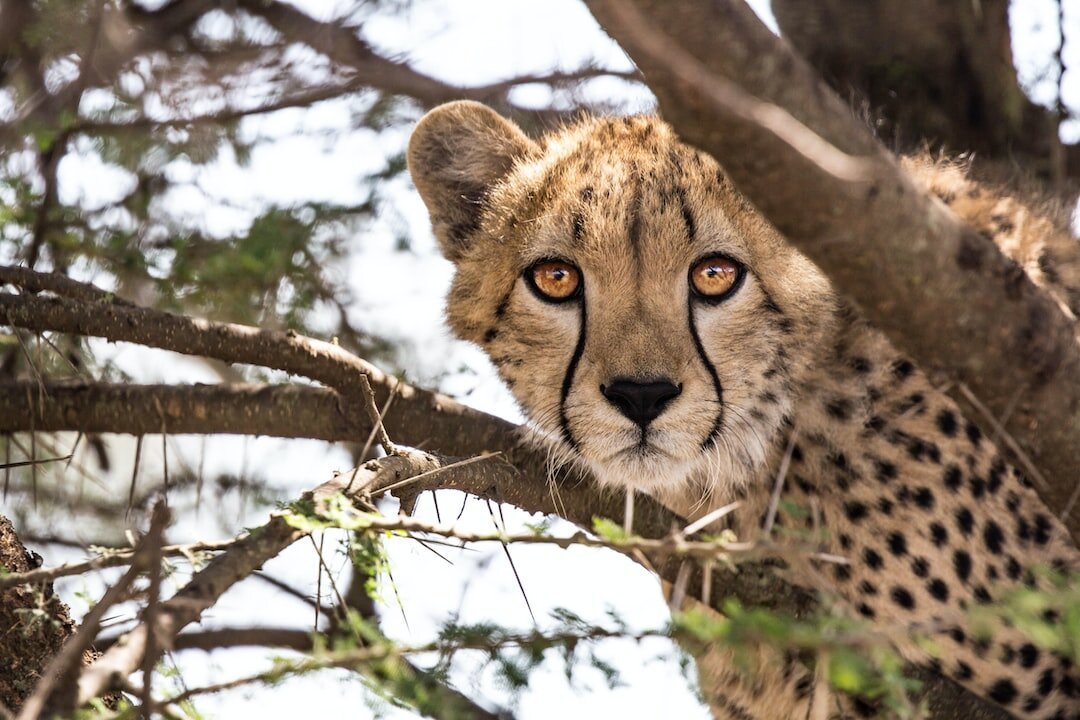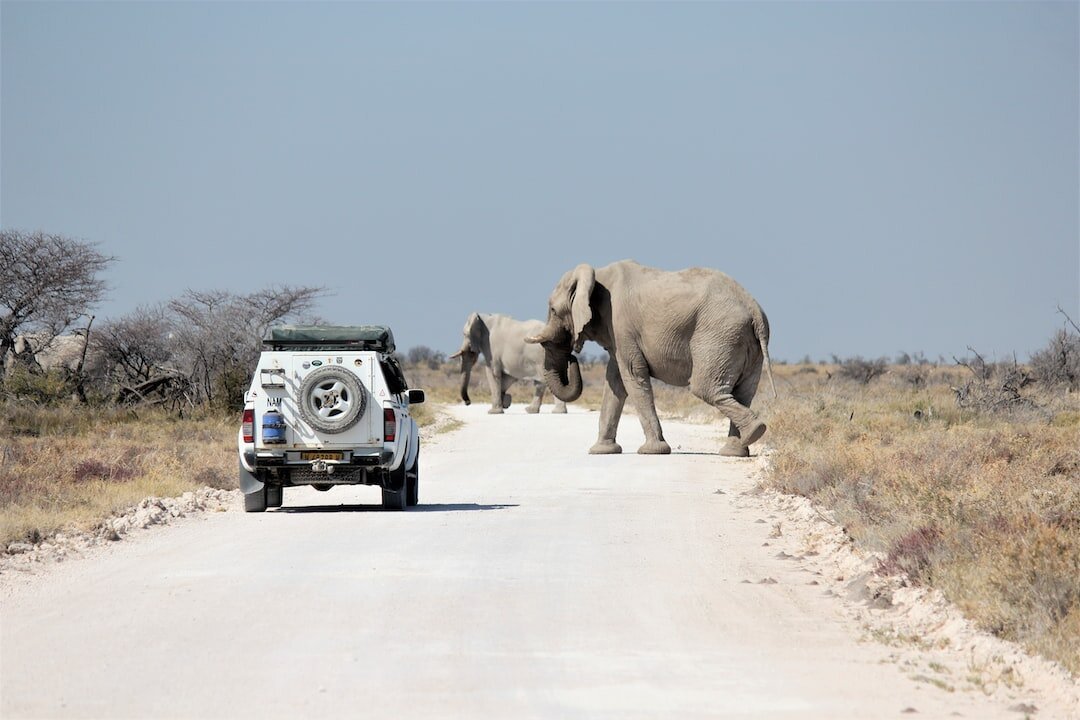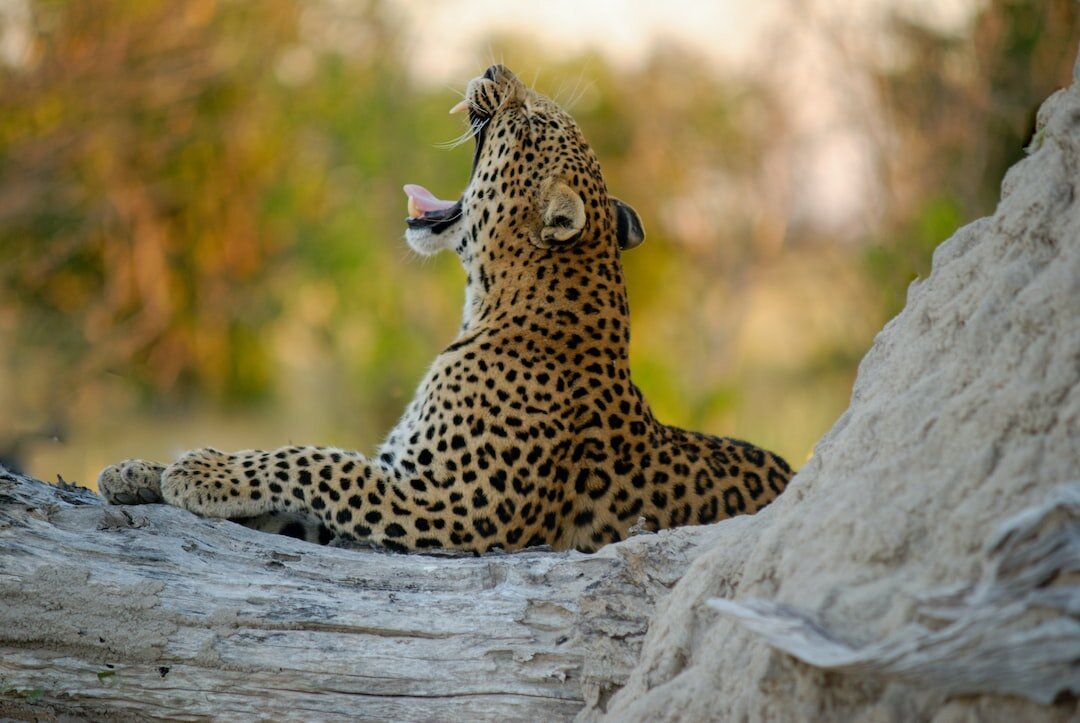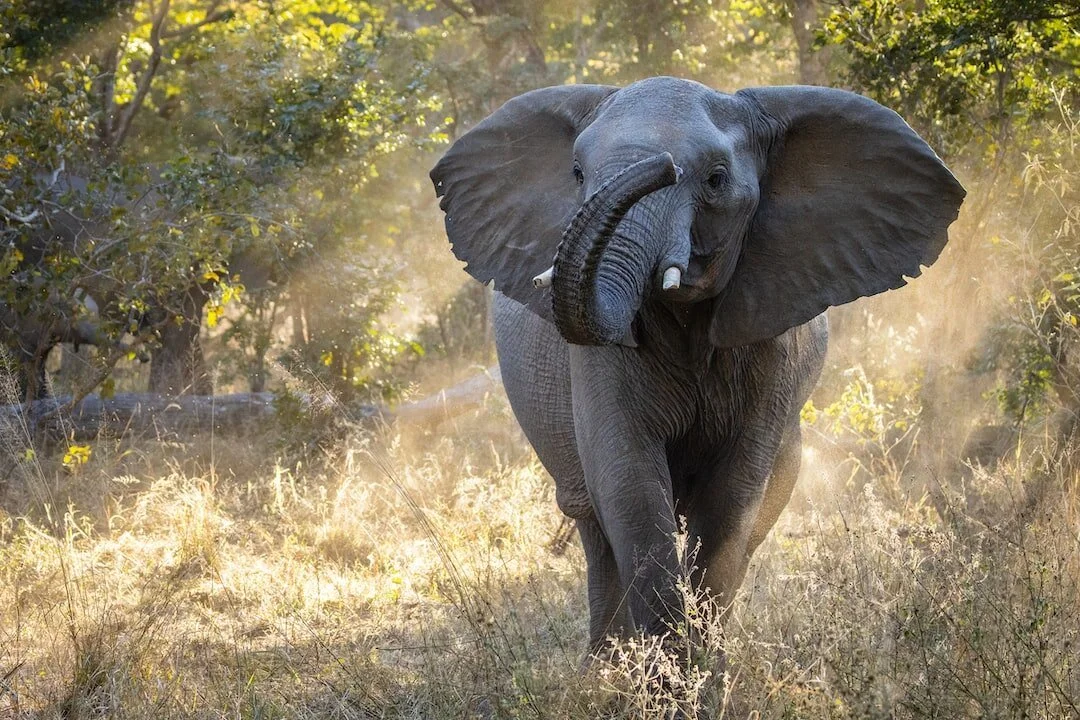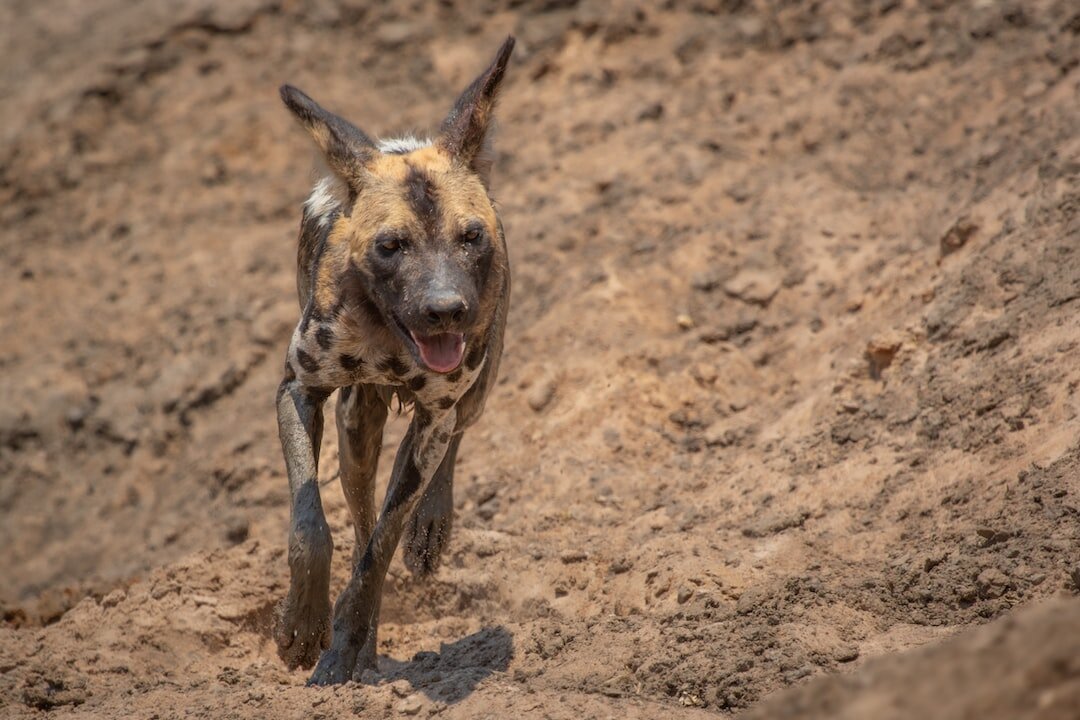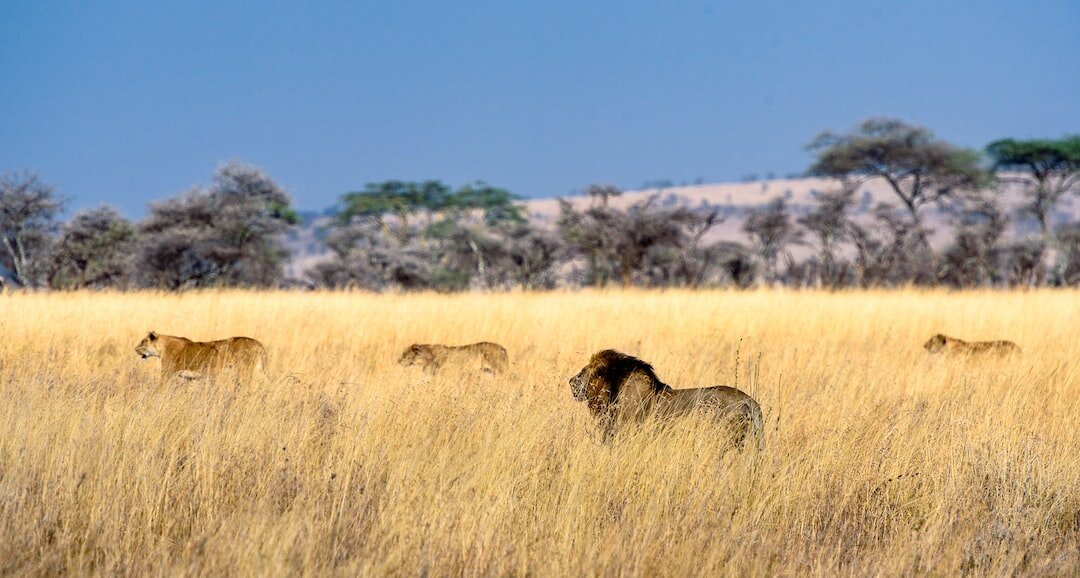
Where To Go On Safari? Comparing Africa's Top Safari Countries
Choosing Your Ideal African Safari Destination
There's much to consider when selecting the perfect African safari destination that suits your needs. With nine countries renowned for world-class safaris, each location has its own distinct advantages.
Tanzania: Best for First-Time Safari Adventurers, Witnessing the Great Migration, and Combining Wildlife with 'Bush & Beach' Escapes.
Kenya: The Ultimate Budget Safari Destination with Unparalleled Wildlife Encounters.
South Africa: Catering to All Budgets and Offering More Than Just Wildlife Viewing, Including Access to Vibrant Cities.
Namibia: Where Awe-Inspiring Landscapes Meet Self-Drive Safaris, Providing Access to Stark Desert Beauty.
Botswana: The Epitome of Luxury and Low-Impact Tourism, Tailored for High Budget Travelers.
Zimbabwe: Dive into Abundant Wildlife and Explore the Beauty of Lake Victoria in Zimbabwe
Zambia: The Destination of Choice for Walking Safaris and an Off-the-Radar Safari Experience
If you're deciding between these from a general wildlife perspective, the sheer richness and variety within the stunning African backdrop means you can't really go wrong. When considering the other most important variables, each location has its own pros, cons and unique traits which we will present for you below.
Comparing Africa’s Top Safari Destinations
-
Tanzania stands as one of the world's premier safari destinations, largely due to its exceptional Big Five encounters. It is home to some of the largest lion populations on the continent. The Serengeti, a sprawling savannah teeming with prey, offers one of the best opportunities to witness these majestic predators. With an estimated 3,000 lions, spotting prides and their hunting antics is a common sight. Also, the rocky kopjes and acacia woodlands provide ideal leopard territory.
Thanks to Tanzania’s commitment to preserving its natural heritage, the Ngorongoro Crater is one of few places where you could see all of the Big 5 in one day, including Rhinos.
-
Tanzania embodies the essence of a National Geographic masterpiece. The expansive Serengeti in the north stands as a focal point of countless nature documentaries, not only for its striking beauty but also for its extraordinary wildlife, many of which are remarkably accustomed to visitors. Witness cheetahs scanning the horizon from towering termite mounds or park alongside a leopard dining in a tree. Experience the marvel of The Great Migration as wildebeest herds graze and give birth in the southern reaches of the park from November to February, followed by the dramatic river crossings in June as they journey between the Serengeti and Kenya's Masai Mara.
-
Tanzania's allure extends beyond the Serengeti. To the east lies the Ngorongoro Crater, Earth's largest and deepest unflooded caldera, a UNESCO World Heritage site teeming with the Big 5 and numerous other elusive treasures. In the western reaches, you'll find remote and extraordinary wildlife havens, renowned as some of Africa's finest locations for encountering wild chimpanzees.
Moreover, Tanzania boasts enchanting national parks such as Tarangire, Lake Manyara, and Ruaha, each offering distinctive landscapes and unforgettable wildlife encounters. From sprawling savannas and lush forests to glistening lakes and meandering rivers, Tanzania's diverse terrain promises a visual feast at every turn.
-
The Maasai people are iconic symbols of East Africa. Visitors can engage in cultural interactions, witnessing their traditional dances, attire, and way of life. The Maasai Market in Arusha offers unique handicrafts, jewelry, and textiles crafted by Maasai artisans.
Tanzania’s allure extends beyond its wildlife with the option of a relaxing retreat on Zanzibar’s pristine beaches and historic explorations in Stone Town. For the adventurous, Tanzania also offers the opportunity to climb Mount Kilimanjaro, Africa's highest peak. The journey to its snow-capped summit is a test of endurance and an achievement to remember.
-
Tanzania's appeal as the ultimate safari destination transcends wildlife and landscapes. This East African gem boasts a well-maintained road network that facilitates effortless travel between various safari destinations. The primary parks and reserves are seamlessly connected by a network of well-paved roads, ensuring a comfortable and convenient journey. This accessibility simplifies exploration of the country's myriad attractions.
-
Tanzania has long upheld its reputation as a safe and politically stable destination in East Africa. With a thriving tourism industry, the government prioritizes the safety and security of visitors. The warmth and hospitality of the Tanzanian people further enhance the overall sense of well-being for tourists, creating an ideal setting for a worry-free safari experience.
Kenya
vs Tanzania
-
For those seeking the Big Five, Tanzania holds a slight advantage. Its well-known parks, especially the Serengeti and Ngorongoro Crater, provide excellent chances of spotting these iconic animals. Kenya, however, offers impressive opportunities as well, particularly in the Maasai Mara and Amboseli National Park. Leopard sightings may be rarer, but the abundance of lions and elephants which are easily observed compensates. Ultimately, both countries deliver memorable Big Five encounters.
-
Tanzania and Kenya are wildlife havens, each with its own unique offerings. Tanzania Serengeti National Park is famed for the Great Migration, if not more so than Kenya. It offers an unparalleled spectacle of wildebeests and zebras on the move. Kenya, meanwhile, boasts prolific game in the Maasai Mara, Amboseli's elephants, and the flamingos of Lake Nakuru. Both countries offer exceptional wildlife viewing opportunities, with the odds of seeing specific animals often depending on the time of year and park visited.
-
Tanzania boasts iconic national parks like the Serengeti and Ngorongoro Crater, showcasing vast savannahs and dramatic volcanic terrain. Kenya, however, offers its gems, including the Maasai Mara (an extension of the Serengeti) and Amboseli, which feature rolling grasslands and the backdrop of Mount Kilimanjaro. Both countries deliver stunning scenery. Being so similar and neighbours to each other, in terms of scenery, it's hard to call the two apart.
-
Kenya offers a rich cultural tapestry, with encounters with the Maasai and Samburu tribes providing a deeper understanding of local traditions. Tanzania, on the other hand, showcases its own cultural gems, including interactions with the Maasai and visits to vibrant local markets. Additionally, Tanzania offers the allure of Zanzibar, a spice island with a unique cultural blend, while Kenya presents the chance to explore Nairobi's cosmopolitan attractions.
-
Tanzania has an advantage in terms of accessibility and park infrastructure. Tanzania boasts a well-developed road network, making it easier to access its national parks. The infrastructure within the parks is also generally better maintained, offering smoother game drives and comfortable refreshment areas.
Kenya's road infrastructure has seen improvement, with decent highways leading to its parks. Inside the parks, the road conditions can be challenging, requiring robust safari vehicles. Some parks may have limited infrastructure. Both countries have competent guides, ensuring an enriching safari adventure.
-
Kenya has made efforts to enhance safety for tourists. While urban areas can pose security concerns, national parks and safari areas are generally considered safe. Tanzania on the other hand, has a reputation for political stability and safety as a tourist destination, making it a reliable choice for travellers. However, it's essential to stay informed about local conditions and follow safety guidelines.
South Africa
vs Tanzania
-
For enthusiasts seeking the Big Five, both Tanzania and South Africa deliver remarkable encounters. Tanzania is a Big Five powerhouse, and the Serengeti National Park is a lion kingdom. With an estimated 3,000 lions, it provides one of the highest lion densities in Africa. It's not uncommon to see multiple prides during a single game drive.
South Africa is a diverse and dynamic safari destination boasting impressive lion populations in multiple regions. Leopard sightings in South Africa are common but can be more sporadic than in Tanzania. However. the Sabi Sands Game Reserve is renowned for its prolific leopard sightings. The reserve's experienced trackers and guides are skilled at finding these elusive cats, making it one of the best places to spot leopards in the wild.
Both Tanzania and South Africa offer outstanding opportunities to see the Big Five, and the choice depends on your preferences. If your priority is comprehensive wildlife encounters, including high chances of seeing lions and leopards, Tanzania, particularly the Serengeti, is a top pick. The sheer volume of lions in the Serengeti ensures thrilling sightings. Additionally, the Serengeti offers the Great Migration spectacle, an added bonus.
-
Both Tanzania and South Africa offer exceptional wildlife viewing opportunities. Tanzania's vast wilderness teems with iconic African species and its parks are renowned for their abundant wildlife. It is a destination renowned for the Great Migration, a truly phenomenal wildlife spectacle. While South Africa's Kruger National Park also teems with the Big Five and diverse birdlife. Specific animal sightings can be unpredictable in both countries, adding an element of excitement to your safari.
-
Tanzania's national parks, such as the Serengeti and Ngorongoro Crater, boast vast savannahs, untamed wilderness, and dramatic volcanic terrain. South Africa's Kruger National Park offers its brand of beauty, with diverse landscapes ranging from lush riverine forests to arid plains. While both destinations offer remarkable scenery, the Serengeti's vastness, and the Great Migration (a highlight for many safari enthusiasts), tip the scales slightly in Tanzania's favour.
-
South Africa stands out for its rich cultural tapestry, from vibrant cities like Cape Town to cultural villages and historic sites like Robben Island. Tanzania's cultural diversity shines through in its interactions with the Maasai people, local markets, and historical sites like Stone Town in Zanzibar. While South Africa offers a wider range of cultural and tourist activities, Tanzania's cultural offerings have their own distinct charm.
-
Tanzania's road infrastructure is generally well-developed, simplifying access to its national parks. Inside these parks, experienced guides offer informative and safe safari experiences. South Africa, with its excellent road network, makes it easy to reach its national parks, known for good infrastructure and a high standard of safari guides.
-
Both Tanzania and South Africa are considered safe for tourists, with stable political environments. However, South Africa's urban areas may have higher crime rates compared to Tanzania's rural safari destinations. Nevertheless, exercising caution and following local advice can ensure a safe and enjoyable trip in both countries.
Namibia
vs Tanzania
-
Tanzania is widely considered as one of the best destinations to see the Big Five. These animals thrive in its parks, with high densities particularly in the Serengeti, Ngorongoro Crater, and Tarangire. Conversely, Namibia’s national parks, such as Etosha and Namib-Naukluft, are not renowned for offering widespread sightings of the Big 5. Namibia’s unique landscapes attract visitors for other reason such as its stunning scenery and desert adapted wildlife like desert adapted elephants and black rhinos. Except for Rhinos (where Namibia has made impressive conservation efforts), Tanzania emerges as the better choice for the likelihood of seeing the Big 5 due to its renowned national parks, extensive wildlife populations and well-established conservation efforts
-
Namibia offers a unique wildlife experience. The park's arid nature means fewer trees and more open spaces, which can make animal sightings more predictable but less diverse compared to Tanzania, a destination renowned for its abundant wildlife. Namibia’s Etosha National Park is known for its waterholes teeming with wildlife where you can discover the unique desert-adapted wildlife drawn to the promise of water. In contrast, the Serengeti's Great Migration is a wildlife spectacle of global renown. The diverse ecosystems and large protected areas provide unparalleled game-viewing opportunities.
-
Namibia's stark beauty is its hallmark. Etosha National Park features a vast salt pan surrounded by arid savannah, while Damaraland showcases striking desert landscapes and unique rock formations. However, Tanzania's rich variety, iconic sights and more upscale parks may tip the scale for some. The Serengeti boasts vast savannahs and the iconic Great Migration. Ngorongoro Crater's volcanic caldera is a natural wonder, and Tarangire's ancient baobab trees paint an otherworldly landscape. The variety of terrains in Tanzania is unparalleled.
-
Both countries offer unique and rich cultural offerings add depth to the safari experience. Tanzania's cultural diversity shines through interactions with Maasai communities and a visit to the island of Zanzibar with its Swahili heritage. Namibia offers a different cultural experience, with the chance to meet indigenous San Bushmen and explore the local Himba culture.
-
Both countries offer well-developed road networks. Tanzania has good access roads leading to its national parks. Whereas Namibia boasts excellent road infrastructure, even into remote areas, easily allowing self-drive safaris. The infrastructure within Tanzania’s parks are well maintained, offering smooth game drives. However, during the rainy season the conditions are better suited for the more robust safari vehicles. Safari guides are well-trained and knowledgeable, providing enriching experiences in both destinations.
-
Namibia is considered one of Africa's safest destinations, offering a secure environment for travelers. It has a stable political climate, enhancing the peace of mind of visitors. Similarly, Tanzania has a reputation for political stability and safety as a tourist destination. While petty crime can occur in urban areas, the overall safety record for tourists is positive.
Botswana
vs Tanzania
-
Tanzania is widely regarded as one of the premier destinations to spot the Big 5. If this is one of your main goals, then Tanzania is the better choice due to its established reputation and higher densities of certain species. The Great Migration also adds an extra layer of excitement to the safari.
Both countries offer fantastic opportunities for leopard, buffalo, and elephant sightings. For elephants, Botswana’s Chobe National Park boasts one of the largest elephant populations in Africa. However, you won’t be short of elephants in Tanzania’s either, with up to 300 strong herds in Tarangire National Park.
When it comes to rhinos, Botswana is not traditionally known for being a prime destination, with relatively small populations compared to Tanzania’s Serengeti National Park and Ngorongoro crater – both of which have well-established conservation programs. Moreover, whilst Lions can be found in both destinations, Tanzania’s Serengeti National Park is particularly famous for its high lion densities as the vast grasslands provide excellent cover for these predators, increasing the chance of sightings.
-
Although Botswana does have a lower density of wildlife compared to Tanzania, it is celebrated for its pristine wilderness and low-impact tourism. The Okavango Delta is a haven for diverse wildlife. Unique river-based safaris in Chobe National Park offer fantastic opportunities to observe elephants and other species.
-
Botswana is known for its pristine wilderness and the Okavango Delta. The delta's labyrinthine waterways and lush islands create a unique and vibrant ecosystem. Chobe National Park offers stunning riverfront vistas, while the Makgadikgadi Pans provide an ethereal, otherworldly experience. Botswana's landscapes are remote and unspoiled.
On the other hand, Tanzania's national parks, including the Serengeti, Ngorongoro Crater, and Tarangire, boast diverse and breathtaking landscapes. The Serengeti's sweeping savannahs and the awe-inspiring Great Migration are iconic. Ngorongoro Crater's volcanic caldera is a natural wonder, while Tarangire's ancient baobab trees add a mystical touch. Tanzania's variety of terrains is unrivalled.
-
Botswana's focus is on pristine wilderness and wildlife, making cultural offerings less prominent. However, the San Bushmen communities offer a unique cultural dimension in some areas. Comparatively, Tanzania offers enriching cultural experiences, with opportunities to interact with Maasai communities and explore the island of Zanzibar, with its Swahili heritage and historic Stone Town.
-
Both destinations have good road infrastructure. Botswana's has well-maintained road infrastructure making it easy to reach remote areas. Tanzania provides good access to all major parks. Whilst safari guides in Tanzania are very knowledgeable offering enriching experiences, Botswana shines in respect of its highly trained safari guides.
-
Both countries are considered safe tourist destinations offering a secure environment for travellers. Botswana boasts a stable political climate, ensuring peace of mind for visitors with Tanzania also enjoying a reputation for political stability and safety as a tourist destination.
Zimbabwe
vs Tanzania
-
When it comes to the likelihood of seeing the Big Five, Zimbabwe holds a slight advantage. There is a relatively high chance of leopard sightings vs expected sightings of once every few days in Tanzania. Tanzania on the other hand, remains an unbeatable destination for lion encounters, with extensive grasslands and renowned lion populations. Zimbabwe also emerges as the preferred choice for rhino sightings as conservation efforts have led to a growing rhino population. Sightings in Tanzania remain elusive due to poaching and conservation challenges. Likelihood of encounters or elephants and buffalo are high in both countries.
-
Zimbabwe boasts a wealth of wildlife, particularly in Hwange National Park. Here, you can spot the Big Five and other iconic species. While Zimbabwe's game-viewing opportunities are exceptional, Tanzania has larger protected areas and the unique Great Migration increasing its sheer wildlife diversity.
-
Zimbabwe's flagship park, Hwange National Park, is known for its vast grasslands and diverse habitats. The dramatic landscapes of Mana Pools, along the Zambezi River, feature riverine forests and expansive floodplains. While Zimbabwe offers stunning scenery, Tanzania's boasts iconic sights of the Serengeti's sweeping savannahs and the legendary Great Migration which may tip the scale for some.
-
Zimbabwe's focus is primarily on wildlife and natural attractions, with fewer cultural offerings. Tanzania offers enriching cultural experiences, with opportunities to interact with Maasai communities and explore the island of Zanzibar, known for its Swahili heritage and historic Stone Town. Although not a cultural experience, a safari in Zimbabwe allows for easy passage to Lake Victoria – the largest waterfall in the world by volume.
-
In terms of infrastructure and guiding, both countries are on par. Zimbabwe has made substantial improvements in road infrastructure, enhancing accessibility to its national parks. However, Tanzania has a slight edge here as it provides good access to all major parks. With regards to safari guides, Tanzanian guides are very knowledgeable providing immersive experiences but, the safari guides in Zimbabwe are highly trained, offering exceptional insights into the country's unique ecosystems.
-
Zimbabwe’s national parks and safari areas are generally considered safe having made significant strides in improving safety for tourists. Tanzania enjoys a reputation for political stability and safety as a tourist destination.
Zambia
vs Tanzania
-
For those seeking the Big Five, Both Tanzania and Zambia offer incredible wildlife experiences, with chances of seeing the Big Five in both destinations. However, Tanzania is the standout choice. Its well-known parks, especially the Serengeti and Ngorongoro Crater, offer excellent chances to spot these iconic animals. While Zambia offers sightings of the Big Five, the remoteness of some areas might make it slightly less likely.
For lion sightings, Tanzania is unrivalled. With an estimated 3,000 lions in the Serengeti alone as well as being one of the best places in the country for leopard sightings! For those seeking intimate encounters and a more exclusive safari experience, Zambia, especially South Luangwa National Park, offers a unique blend of breathtaking landscapes and exceptional opportunities to spot lions and leopards. The park's dense woodlands and riverbanks create a leopard haven.
-
Both Tanzania and Zambia offer incredible wildlife viewing opportunities, but the chances of seeing specific animals may vary. Tanzania is famous for the Great Migration and the "Big Five". Zambia, while equally rich in wildlife, might provide a more exclusive feel due to fewer tourists. However, specific animal sightings can be unpredictable in both countries, adding an element of excitement to your safari.
-
While both countries offer remarkable scenery, Tanzania's iconic landscapes, such as the Serengeti's sweeping savannahs and Ngorongoro's volcanic craters, often steal the spotlight.Tanzania boasts world-famous national parks like the Serengeti and Ngorongoro Crater, which are renowned for their breathtaking landscapes and diverse ecosystems. The Serengeti's vast plains are a stage for the Great Migration, an unparalleled wildlife spectacle. Zambia, on the other hand, offers parks like South Luangwa and Lower Zambezi, known for their pristine wilderness.
-
Both Tanzania and Zambia offer unique cultural experiences. Tanzania's rich cultural tapestry includes interactions with the Maasai people, while Zambia's diverse tribes provide a fascinating insight into local customs. Tanzania also boasts the exotic spice island of Zanzibar, adding a tropical twist to your safari adventure.
-
Tanzania's road infrastructure is generally more developed, with well-maintained roads leading to its national parks. Inside the parks, experienced guides offer insightful and safe safari experiences. Zambia's road infrastructure may be less developed in some areas, but this can lead to a more off-the-beaten-path adventure. Safari guides in both countries are knowledgeable, but Tanzania's experience in catering to tourists is well-established.
-
Tanzania has a strong reputation for political stability and safety, making it a reliable choice for tourists. Zambia, too, is considered safe for travellers. However, as with any destination, it's essential to stay informed about the current situation and follow local advice to ensure a secure journey.


